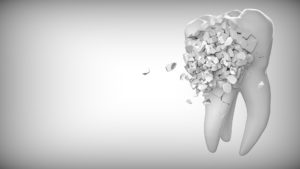
You might not have heard the term tooth luxation before and this is totally understandable. Basically, it refers to the condition when a tooth is dislodged for some reason.
It’s easy to think that most tooth injuries are due to a broken tooth, a set of chipped teeth, or whenever a tooth goes missing because of an accident. You might not have heard the term tooth luxation before and this is totally understandable. Basically, it refers to the condition when a tooth is dislodged for some reason. The ligaments and tissues are disrupted by trauma and that the nerves and blood supply could be affected. Let’s learn more about the different classifications of this problem.
Concussion
Periodontal ligaments are immensely important. They are supposed to anchor the tooth in its place where it belongs. But if it isn’t out of place and can’t move, then it belongs to the concussion category. When you tap it, it feels tender. X-rays can help diagnose the problem, as can pulp sensibility tests. If it’s positive, then the pulp is still vital; if it is negative then it means that the pulp won’t heal as it should. Although this type of tooth luxation won’t need treatment, there is still an abundance of caution involved on the part of your dentist.
Subluxation
If the tooth moves but isn’t displaced, then it counts as subluxation. Bleeding gums and the tooth is sensitive when you touch it. These symptoms are a sign that you might need X-rays or pulp tests to determine what kind of damage is present and if it might heal. Flexible splints can help keep the tooth stable to minimize pain when biting or chewing.
Extrusive
The third type of tooth luxation is known as extrusive. This is the case when the tooth is moveable and it looks oddly elongated. The socket is still there, even though the ligament has been harmed in some way. Flexible splints and root canals could be the solution to this problem.
Lateral
Lateral tooth luxations are also possible. When the ridge of the jawbone that holds onto your teeth is hurt and then ligament is separated, then this type of luxation happens. Your dentist will pull the tooth out and attempt to reset it with the help of forceps. Flexible splints and constant monitoring of the issue are necessary, and root canals are possible.
Intrusive
Lastly, let’s discuss intrusive luxations. This is when the tooth is pushed upwards into its socket. Root canal therapies can help, along with temporary fillings used a few weeks after the tooth is moved around inside the mouth.
KEEP YOUR MOUTH HAPPY WITH ANNAPOLIS DENTAL CARE!
Whether it’s a regular check-up you need or a tooth extracted, your dentist in Annapolis is here to serve! Annapolis Dental Care has the expertise and compassion to work with you on improving your oral health. Your comfort and health are our top priorities, and so we go above and beyond to make our patients happy and give them the highest quality care. To set up an appointment today, please give us a call at 410-267-0766 or visit us online. For more oral health tips for you and your family, follow us on Facebook, Twitter, and YouTube! We are always looking for new patients, so if you live in Arnold, Annapolis, Anne Arundel County, MD, come on down!
